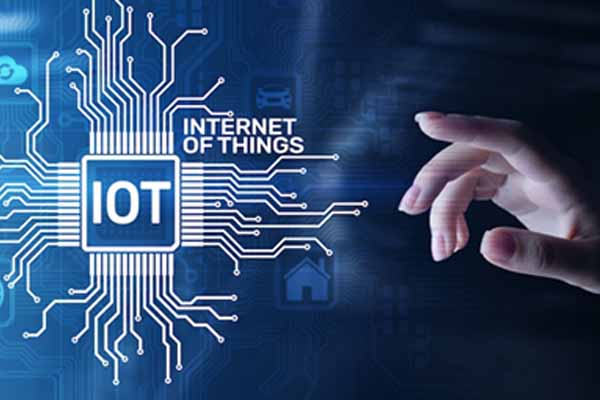The Internet of Things (IoT) is a network of connected devices which exchanges data, and this data is collected in real-time by sensors or actuators. All this data is stored in the cloud, which enables faster interaction of data and extra storage. When this technology is applied in industries, it helps to collect huge amounts of real-time data, which is used to conduct various analyses, test efficiency, and so on. In industries, various sectors are to be monitored to keep the plant running, and IoT devices make it easier by doing most of it on their own.
The mining sector has advanced a lot with the introduction of IoT. Due to its large-scale setup, setting up mines and building the safety structures takes a lot of time, which results in high investment for the implementation of IoT. There are several steps and methods in mining that are used to extract raw materials. IoT-enabled mines, which are termed smart mines, are the future of the mining sector, and they are being used globally due to their numerous benefits. As mining is a dangerous occupation worldwide, smart mines have improved worker safety by accurately tracking their location with the help of GPS (global positioning system), performing operations remotely, and a wide range of other automation.
KEY CHALLENGES FACED IN THE MINING SECTOR
At present, the mining sector is facing numerous technical hurdles. As the data collected after each process is shared with the next process in an excel sheet, there is no interaction between the processes. To enable automated interaction between these systems, several issues can be listed:
DATA SECURITY
Data security is a growing concern for all sectors, as that is crucial for the analysis of various factors. The data generated by each system must be secured and have ownership. This data can be used to predict the system trends and business approach. The chances of data leakage can be during the interaction between the systems. To avoid such cases, the communication channel must be made secure. Failing to keep up with the security system, the system may become vulnerable to various attacks like DDoS (distributed denial of service) attacks.
DATA MANAGEMENT
The data collected by IoT devices is stored in a central data layer which can be later accessed to perform analysis. Data management is a crucial aspect as it gives an image of all the operations being conducted in the organization and observes the effect of one process on others. This helps the organization to make optimal decisions concerning business and operations. Data is collected and stored by various sources like Enterprise Resource Planning (ERP), Manufacturing Execution Systems (MES), and so on. This leads to more complex data management, which is tackled by various techniques like a data lake, migration, and replication. A data lake is simply the pool of data created by the systems, data migration is the complete transfer of data from an existing storage path to a new one, and data replication is the copying of data stored in an existing data storage path in a new one.
ANALYSIS
Analytical results of the data collected are highly beneficial for analyzing various factors which assist in making business and technical decisions. Analysis helps the large-scale mining sector dearly. The managers can interpret the efficiency of each system and make decisions accordingly. The safety of workers is also ensured by determining whether the mine built is strong enough or not, which is done by analyzing the vibrations in the ground.
APPLICATIONS OF IOT IN THE MINING SECTOR
The extent of IoT technology in the mining sector has led to the conclusion that the present mining sector is way more advanced than the conventional one. IoT has enabled the operators to take decisions by analyzing the situation as it is happening in real-time and then taking decisions accordingly. IoT has significantly improved the safety of workers in the mine. According to a survey, 15,000 miners die every year due to various deadly diseases caused due to intoxication.
MINING SAFETY
Safety is one of the major concerns in every sector, especially in mining, which demands ultimate risk to life as one is supposed to go as deep as 3,500m (the depth varies from mine to mine). IoT has changed the face of safety by providing reliable data which is used to ensure the safety of workers, for instance, by predicting the structural stability of mines. Various IoT devices are used, like drones and robots, to perform mining operations in toxic environments. The collection of data, such as temperature, humidity, vibrations, pressure, gases, moisture, and so on, can be done by IoT devices. These parameters can be tracked on a real-time basis, and any fluctuation can be noted down.
MINING OPERATION
IoT devices with the data collected will be able to derive efficient mine planning, which would help the managers to make decisions according to the mine plan suggested. The mine plan suggested is considered the most efficient plan as it considers all the key aspects like temperature, humidity, etc. The sensors sense the exact location of the issue and sound an alarm for immediate attention. This helps to evade major accidents.
DATA REPRESENTATION
The collection of data by IoT devices is real-time — hence tracking down a problem and resolving it becomes easier, and this also helps in monitoring workers and mines. Many companies use machine learning to optimize the mining process by selecting a drilling area where the required ore is present in abundant quantity, as machine learning considers all the geological aspects before selecting a drilling area.
Data is stored about every system, which is then represented to the engineers and managers in the form of a graph or chart. Mining is one of the sectors which has largely benefited from IoT devices as they enable remote monitoring of workers and equipment with the help of wireless networks present in the mines. This helps them to create a better and safer working environment.
THE FUTURE OF IOT AND MINING
Mines have become safer and have advanced into the future with the help of IoT devices. The production rate as well as the profits made by mining companies have shot up by implementing IoT in the mining systems and have made the mining system more efficient and reliable. IoT is still moving its way up the ladder by advancing into the future one step at a time. Even though IoT in mining does have a few hurdles to pass, it has significantly changed from what mining was before.















